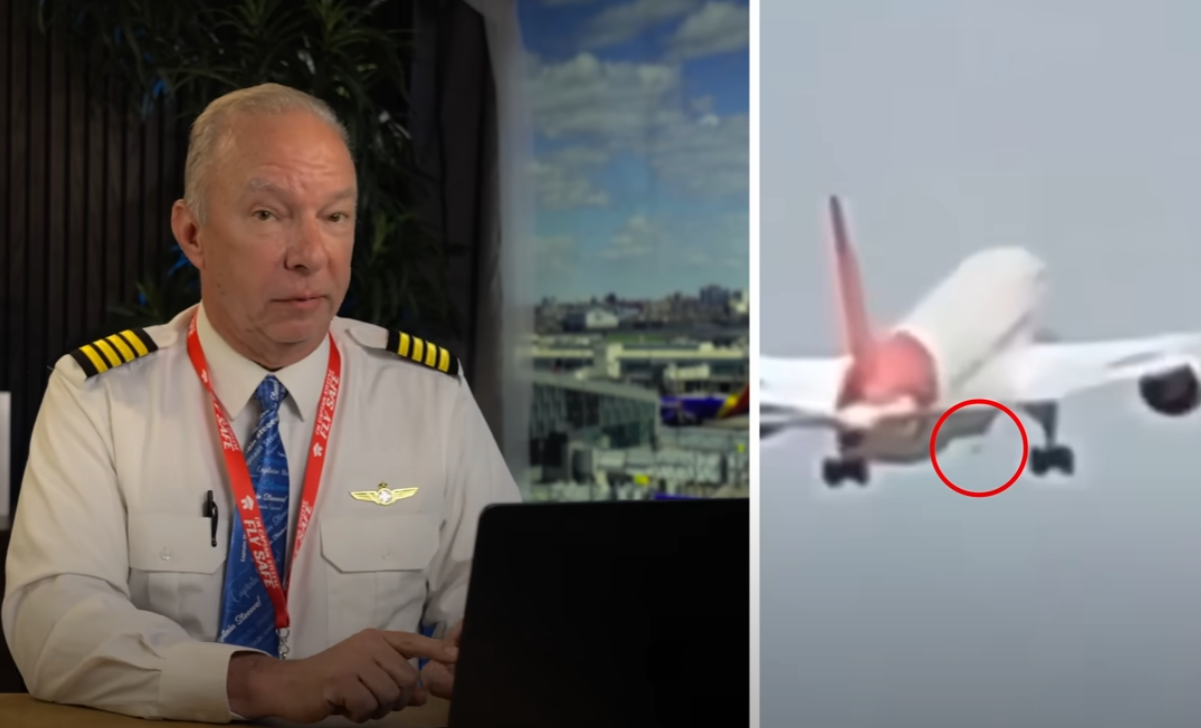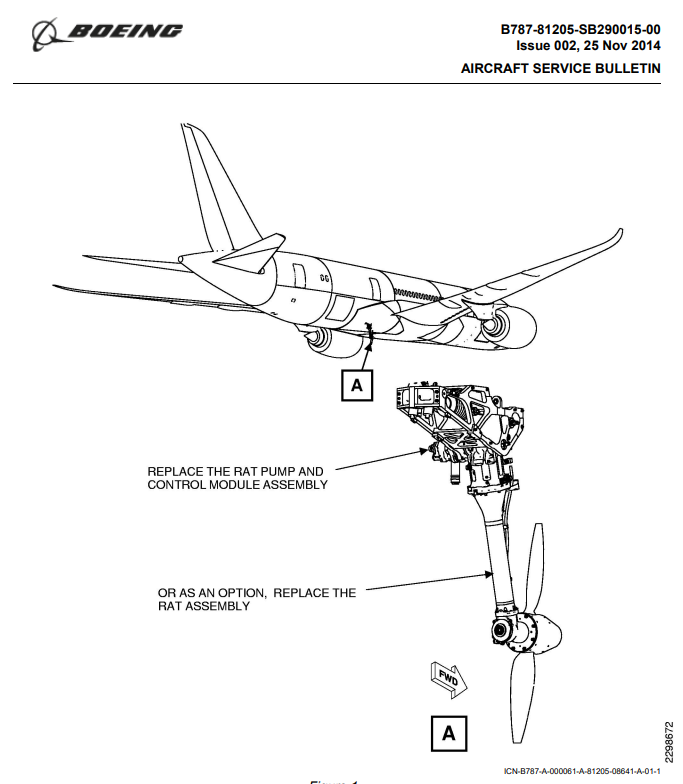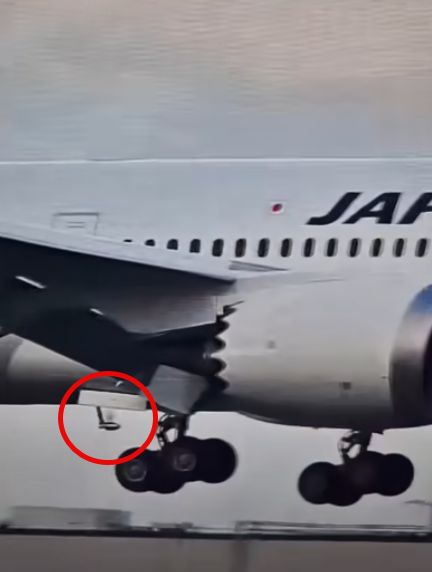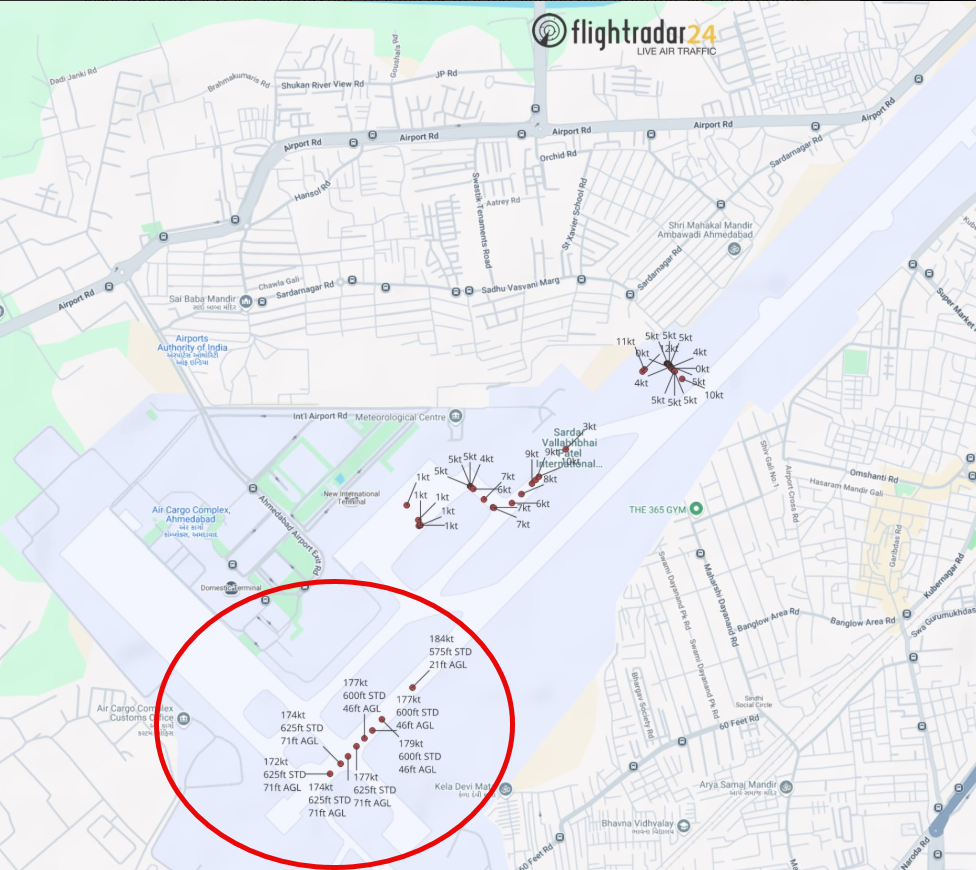
“There, I’ve circled it for you, ” says Steve Scheibner, spotting a ram jet turbine (RAT) on the original video of Air India Flight 1171.” It’s a game changer. ” Picture from Captain Steeeve’s YouTube Channel.
Air India had its 2nd worst day ever when on June 12, 2025, Flight 1171 crashed shortly after takeoff in Ahmadabad, India, killing 461 of 462 passengers and crew. The aircraft rose to less than 100 feet and then started a sickening descent. At a desperate angle, nose up but with no thrust from either engine, the tail struck the top of the medical college’s residence and tore off. Most of the aircraft skidded off the roof, hit the ground, and erupted into a massive fireball. The long-haul flight, non-stop to London’s Gatwick, had tanks full of fuel, ten times more than each aircraft that flew into the World Trade Center. In the intense heat and flame, passengers were burned beyond recognition. Relatives came to the medical college a mile away from the crash site for DNA samples so charred remains could be identified.
Air India has had more than its share of woe. An even worse disaster occurred on June 23, 1985, when Sikh terrorists blew up a 747 on its way to London from Montreal, killing all 329 on board. The years in-between have not been kind, with tales of bad service, safety issues and one day, a 9-hour delay at London’s Heathrow for a rat on the plane.
It was a different kind of thing that was getting attention after the recent disaster. It was a 400-lb RAT, short for ram air turbine, that was spotted by an eagle-eyed aviation expert who was reviewing the doomed aircraft on social media videos. It was a second look that allowed him to spot the RAT and led him to revise the likely cause of the crash.

It is common for armchair experts to post YouTube videos with their explanations of what went wrong in every disaster these days. But Steve Scheibner is no ordinary YouTuber. Schreiber is a retired airline pilot of considerable renown[i] and respected for his insight by news services as well as the aviation community.
Scheibner at first downplayed the dual engine failure. But upon studying the original video of the descending aircraft shot by Aryan Ansari, a Class 12 student. Ansari videotaped the enormous aircraft because it was flying too close for comfort. The video that was widely circulated, however, was a video of Ansari’s video, taken by a news service, according to Scheibner, which had less detail and recorded people talking in the background.
Playing the original video, Scheibner detected a gray dot near the fuselage between the rear landing gear. It kept up with the aircraft. This could not be a bird. He identifies the dot as a ram air turbine and the minuscule speck above it as the flap that opens from which the RAT descends.
Clearly, Scheibner is making an educated guess based on a barely discernible feature. But given his considerable knowledge on the matters of commercial aviation, including the use of RATs). We need to see where this goes.
How Does a RAT Work?
Diagram of RAT on 787 Aircraft Service Bulletin B787-81205-SB290015-00 HYDRAULIC POWER – Ram Air Turbine System – Ram Air Turbine Pump and Control Module Assembly, Boeing.
A RAT is automatically deployed in the event of a massive electrical failure or loss of hydraulic pressure. A complete engine failure can cause a total electrical system failure, as the engines produce all the electrical power on a commercial aircraft. The RAT was created initially for use with military aircraft but has been adopted by almost all, if not all, commercial aircraft. The FAA demands that all commercial aircraft have an electrical power fail-safe, and the RAT has emerged as the fail-safe of choice for every major commercial aircraft manufacturer.

Once deployed, the RAT provides sufficient power for radios, instrumentation, emergency lighting, and controls.
Listening to the original video was also enlightening. Scheibner says the whiny sound picked up during the descent would have to be the sound of the RAT’s propeller, more like a Cessna than a Boeing 787, in the absence of the roar of the aircraft’s main engines. Also, the only surviving passenger recalled a flickering of the lights, which would be consistent with a transition from main power to RAT power.
Scheibner now ranks total engine failure as the most likely cause of the Air India crash, supplanting his initial theory that the pilot had raised the flaps rather than the landing gear. Indeed, the landing gear is clearly down in the video, and in the wreckage, the wing flaps are not extended, both factors that increase drag.
A 400 lb. RAT

The ram air turbine is essentially a wind turbine that is called upon to perform if an aircraft’s hydraulics or electrical system is suddenly compromised. The RAT automatically deploys from the aircraft and into the airstream, probably drawing power to deploy from a battery, then begins to spin, generating enough power for essential functions, such as radio communications, flight control, and emergency lighting.
Boeing appears to have its RATs made by Collins Aerospace.
“Collins’ Ram Air Turbines have helped save more than 2,400 lives over the past five decades,” said Eric Cunningham, vice president, Electric Power Systems for Collins in a September 8, 2022 press release announcing the opening of the company’s wind tunnel in Rockford, Illinois that is able to generate windspeed of 170 knots.
Collins’ largest RAT weighs 400 lbs.
The RAT is designed to be effective at altitude, when there is sufficient velocity to spin the blades and enough time for the crew to restart the engines, or, failing that, to give the crew time to jettison fuel and glide in for a landing.
Who can forget the Miracle on the Hudson when Captain Chesley “Sully” Sullenberger, flying U.S. Air Flight 1549 landed an Airbus 320 on a river after a bird strike disabled both engines. The aircraft had deployed a RAT.

But at only 71 feet above the ground[ii] and descending at the rate of 475 ft/min, the crew did not have the luxury of time.
According to Collins, a RAT needs a start time between 0.5 seconds and 10 seconds.
________
[i] Steve Scheibner, a retired American Airline First Officer, spent 12,000 hours flying 757 and 767 out of Boston’ Logan Airport. He is alive today because he was bumped out of the pilot’s seat on American Flight 11 on 9/11 by a pilot with higher seniority. Flight 11 was one of the two aircraft that flew into the World Trade Center. Scheibner tells that story on In My Seat – A Pilot’s Story from Sept 10-11. These days, he provides a pilot’s perspective on his Captain Steeeve YouTube Channel.
[ii] As calculated by FlightRadar
